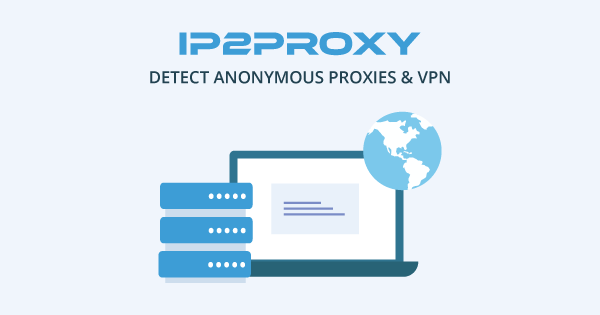In today’s digitally interconnected world, the integrity of online interactions is paramount, particularly for businesses and organizations that rely on secure communications. As cyber threats continue to evolve, so too do the tactics employed by malicious actors, making it increasingly challenging to safeguard sensitive information. One of the most effective strategies for enhancing cybersecurity is the implementation of robust proxy detection mechanisms. The article “Proxy Detection Checker: Identify and Block Risky Connections” delves into the critical importance of identifying and mitigating risky connections that could jeopardize organizational security. By utilizing advanced proxy detection checkers, businesses can effectively identify unauthorized access attempts, block potentially harmful activities, and maintain the integrity of their networks. This article explores the underlying technologies that power these detection tools, the various types of proxies that pose risks, and best practices for integrating proxy detection into an organization’s cybersecurity strategy. As we navigate the complexities of modern online threats, understanding how to leverage proxy detection checkers can significantly bolster an organization’s defensive posture, protecting valuable assets and ensuring compliance with industry regulations.
Understanding the Proxy Detection Checker Tool
A proxy detection checker serves as a critical component in safeguarding online interactions by identifying and assessing the legitimacy of incoming network connections. By analyzing various indicators, such as IP address behaviors and geolocation data, this tool can differentiate between genuine users and those attempting to mask their identity through proxy services. Organizations can leverage this technology to minimize risks associated with fraudulent activities, data breaches, and unwanted access to sensitive information.
Utilizing a proxy detection checker not only enhances the security framework of a business but also fosters a more trustworthy digital environment for users. The implementation of such a tool enables real-time monitoring and automated responses to suspicious activities, thereby facilitating proactive risk management. As cyber threats continue to evolve, integrating advanced proxy detection capabilities will be essential for maintaining robust security protocols and ensuring compliance with industry standards.
Leverage advanced technology to safeguard your network’s integrity and security.
By integrating cutting-edge solutions into their cybersecurity strategy, organizations can significantly enhance the integrity and security of their networks. Advanced proxy detection checkers play a pivotal role in this effort, offering sophisticated algorithms that analyze traffic patterns and user behaviors in real-time. This level of scrutiny allows businesses to quickly identify anomalies that may indicate potential threats, such as unauthorized access attempts or data exfiltration.
Moreover, the proactive capabilities of a proxy detection checker empower organizations to implement automated defenses, reducing response times and minimizing the potential impact of cyber incidents. As the landscape of digital threats continues to expand, investing in advanced technology for network protection not only fortifies defenses but also instills greater confidence among stakeholders in the organization’s ability to safeguard critical assets and maintain operational integrity.
Importance of Identifying Risky Connections
Identifying risky connections is essential for maintaining a secure digital environment, as it enables organizations to detect potential vulnerabilities before they can be exploited. By analyzing user activity and network traffic, a proxy detection checker can reveal connections that may not align with expected behavior patterns or established security protocols. This proactive identification allows organizations to take timely action, mitigating risks associated with compromised accounts or malicious entities attempting to infiltrate the network.
Furthermore, understanding the nature of risky connections aids in refining security policies and frameworks. By recognizing the characteristics of these connections, organizations can adjust their defenses to target specific threats more effectively, leading to a more resilient infrastructure. This not only enhances cybersecurity posture but also contributes to compliance with regulatory standards, which increasingly mandate rigorous protection measures against data breaches and unauthorized access.
Prevent data breaches by detecting suspicious proxy usage within your network.
Suspicious proxy usage can serve as a red flag for potential data breaches, highlighting unauthorized access attempts or malicious user actions within the network. By leveraging a proxy detection checker, organizations can continuously monitor outbound and inbound traffic for unusual patterns that may indicate illicit proxy activity. This involves identifying inconsistencies in IP addresses, geographic locations, and connection types, helping to ensure that only legitimate users maintain access to sensitive resources. Swift detection of such anomalies not only minimizes the risk of data exfiltration but also enhances incident response capabilities by allowing IT teams to act decisively when threats are identified.
Incorporating advanced proxy detection mechanisms enhances an organization’s overall security framework, enabling a more nuanced understanding of network activity. It facilitates the identification of unfamiliar proxies that may be used to obfuscate malicious behavior, thus closing gaps that could otherwise lead to breaches. By regularly updating detection algorithms and integrating threat intelligence data, the proxy detection checker can adapt to evolving tactics employed by cybercriminals, safeguarding the integrity of organizational data and bolstering trust among stakeholders.
Implementing Effective Blocking Strategies
Effective blocking strategies are essential for maintaining robust network security, particularly when dealing with the intricacies of proxy usage. Utilizing a proxy detection checker, organizations can implement rules that automatically block suspicious connections based on predefined criteria, such as the reputation of IP addresses or patterns of anomalous behavior. This proactive approach not only mitigates the risk of unauthorized access but also streamlines response workflows by reducing the volume of potentially harmful traffic before it reaches critical systems.
Developing a layered blocking strategy can significantly bolster defense mechanisms. By integrating machine learning algorithms into the proxy detection checker, organizations can continuously adapt and refine their blocking rules, ensuring they remain effective against evolving threats. Furthermore, implementing feedback loops that analyze blocked attempts can provide valuable insights into attack vectors, allowing security teams to strengthen their overall posture against future proxy-related risks. This strategic combination of detection and blocking empowers organizations to safeguard their digital assets effectively.
Utilize the proxy detection checker to enhance your connection security and protect sensitive data.
Enhancing connection security and safeguarding sensitive data require a proactive stance against the potential threats posed by unauthorized proxy usage. By employing a proxy detection checker, organizations can gain real-time insights into connection legitimacy, enabling them to identify and react to suspicious behavior swiftly. This tool allows for the assessment of incoming traffic, ensuring that only verified connections are allowed to access sensitive systems and information. As a result, the risk of data breaches and other malicious activities is significantly reduced.
Moreover, the insights gleaned from utilizing a proxy detection checker can inform broader security strategies. By analyzing the data collected on detected proxies and their behaviors, businesses can identify trends that may indicate larger vulnerabilities within their networks. This intelligence not only strengthens preventive measures but also enhances incident response by equipping security teams with the knowledge needed to address and mitigate future threats effectively. In an increasingly complex digital landscape, adopting such tools is critical for maintaining a secure environment for both organizational assets and sensitive information.
In conclusion, the implementation of a Proxy Detection Checker is an essential step for organizations seeking to safeguard their digital environments. By effectively identifying and blocking risky connections, businesses can not only protect sensitive data but also enhance the integrity of their online operations. As cyber threats continue to evolve, employing advanced proxy detection technologies will empower companies to mitigate risks and maintain trust with their clients and stakeholders. Ultimately, investing in robust security measures like a Proxy Detection Checker is a proactive approach to navigating the complexities of today’s digital landscape.



